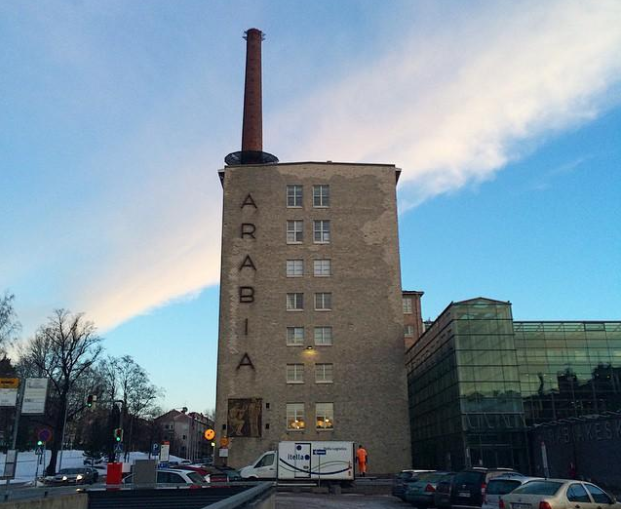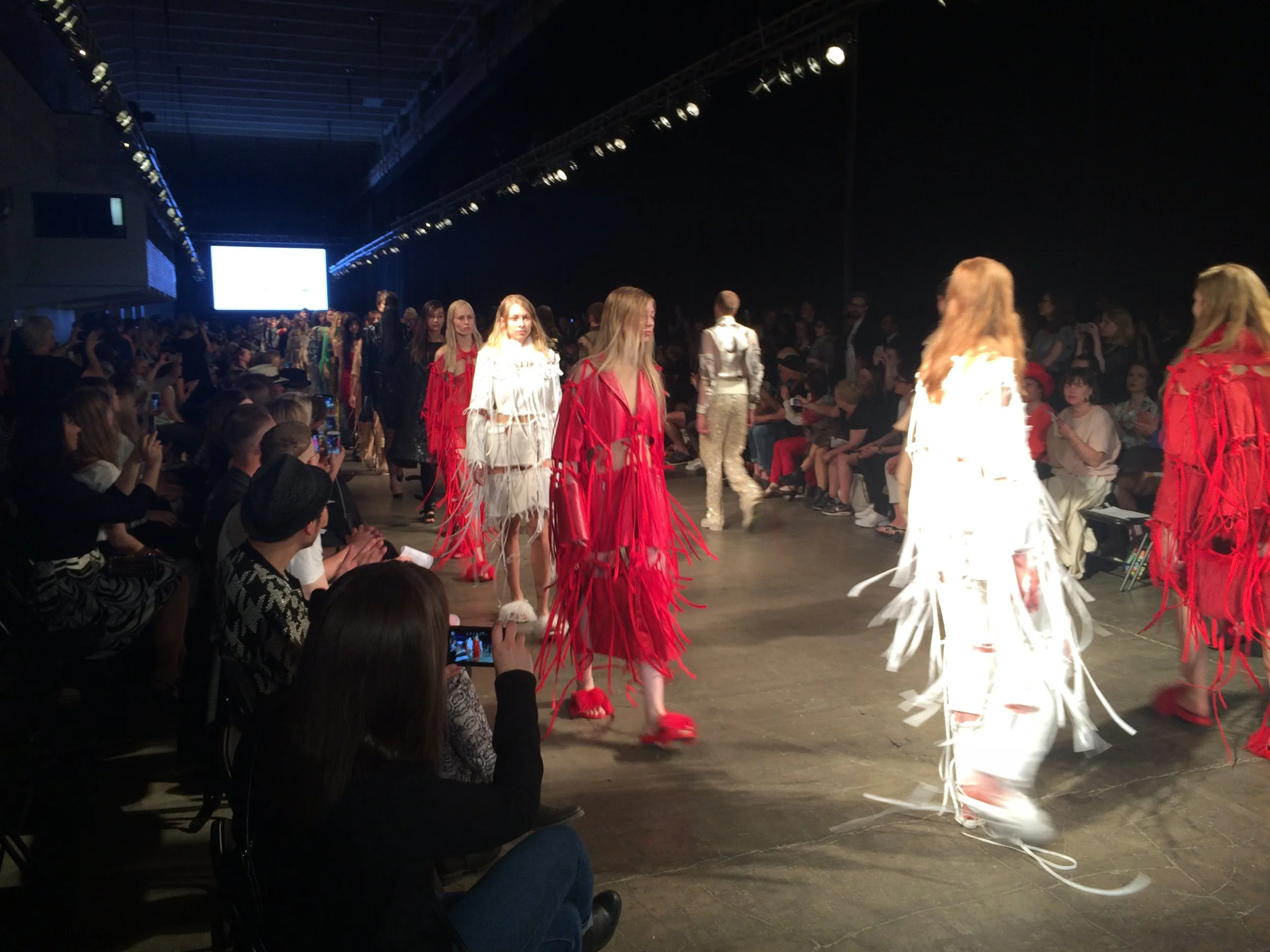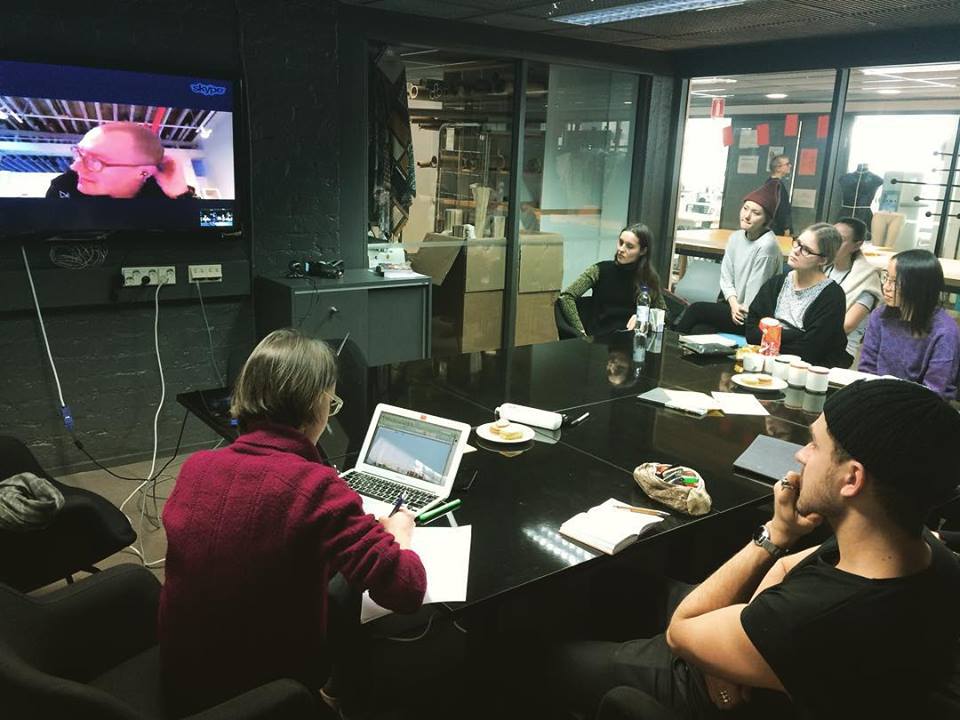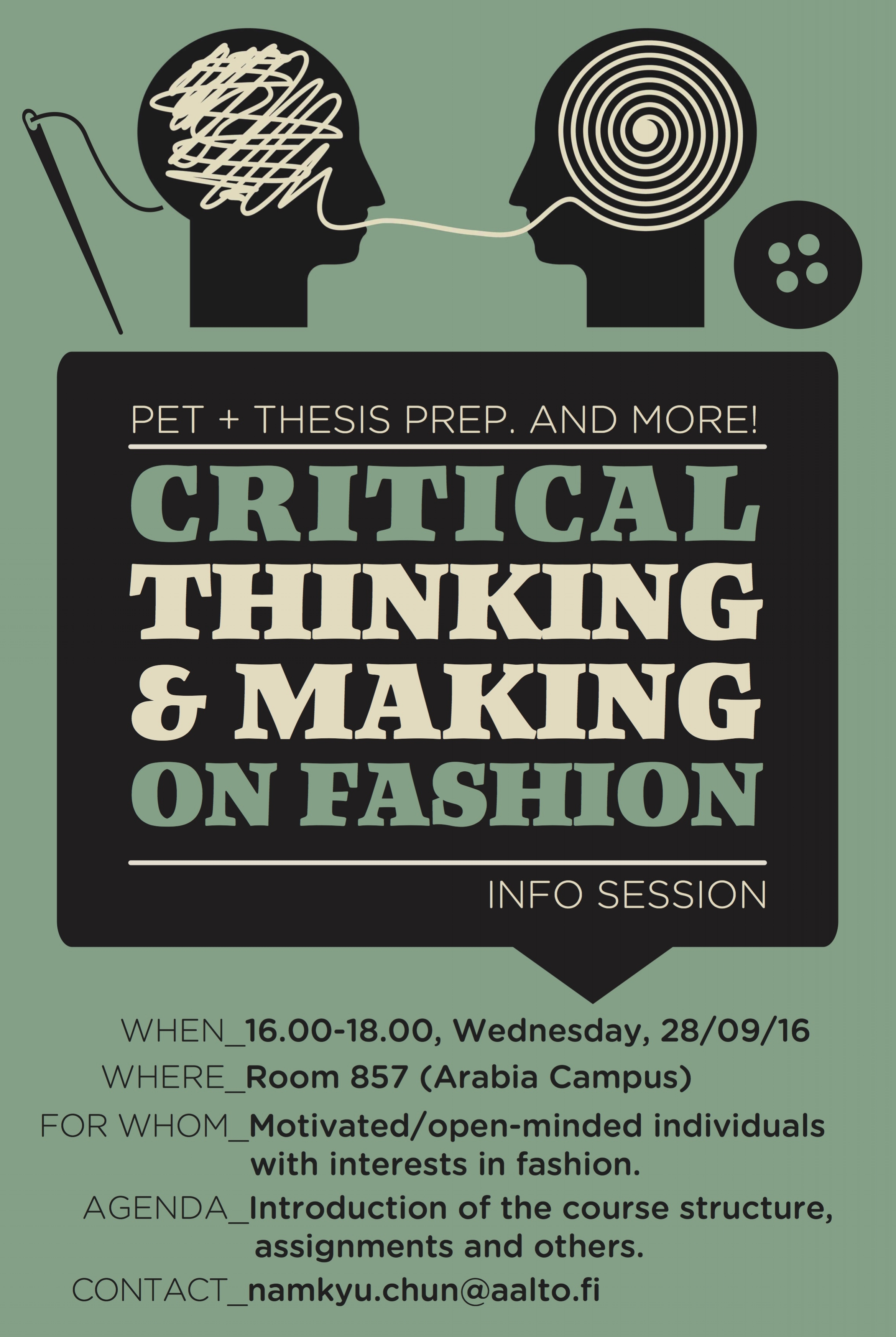Critical Thinking and Making on Fashion: “Dead Fashion Designers Society”
Episode 1: What Is Going on at Aalto Fashion?
On August 22nd, 2016, the education section of the Business of Fashion, online news platform for fashion affairs, released a global ranking of fashion schools. A little-known name had ranked third place among all bachelor’s level programs evaluated, Aalto University School of Arts, Design and Architecture (Aalto ARTS), in a significant achievement for the school far north in Helsinki, the capital of Finland. Finnish journalists would have proudly considered it to be a representation of the recent ‘Helsinki phenomena’ in the Nordic fashion context. On the one hand, the truth behind the numbers shows that Aalto students have distinguished themselves as winners of the International Hyères Festival of Fashion and Photography and have been recruited by prestigious fashion houses such as Lanvin, Balenciaga, and Maison Martin Margiela. This level of recognition has strongly contributed to developing the school’s reputation outside of Finland. Interestingly, the school’s master’s program was ranked lower, occupying the 15th spot. What is it that sets these two programs apart?
For the authors, the sociocultural context and perception of ‘Aalto Fashion’ is viewed from an outsider’s lens. As doctoral researchers and teachers, the authors could identify peculiarities of Aalto Fashion, ultimately informing the school’s pedagogies shaping the development of programs within the institution. Interested in bringing the Master’s and Bachelor’s programs closer together, the authors joined forces to launch a course aimed at strengthening the curriculum. The course proposes a disruptive model for teaching students at a fashion design school, borrowing approaches from the inter- or transdisciplinary programs at Universidade Federal do Rio de Janeiro (The Federal University of Rio de Janeiro) and Parsons School of Design. The main challenge set here is to bring practice and critical thinking together for fashion design students.
The aim of this episode is to share our observations on Aalto Fashion and introduce the structure behind the newly developed course. This paper begins with the background and origin of the student-driven course proposal. As this is an ongoing course, this paper is divided into two episodes. For this first episode, we will present the background, teaching methodology and the structure of the course. Due to the multi-layered context (from Helsinki, Aalto ARTS, Department of Design, FCD program to the Personal Project course), it is important to introduce the reasons behind the launching of the course. For the second episode, observations from student-driven sessions and interim results will be shared. The course will continue until early-September 2017.
Background and Origin: “Dead Fashion Designers Society”
Before we get to the origins of the course, it is key to understand the institution that embraces it. Aalto University was created in 2010 from the merging of three institutions, namely Helsinki University of Technology, Helsinki School of Economics, and University of Art and Design Helsinki. The multidisciplinary educational approach played a central role behind the merge and took effect in schools as well as at the department level. In the Department of Design, it can also be found amongst all five master’s level programs: Product and Spatial Design, Collaborative and Industrial Design, Creative Sustainability, International Design Business Management, as well as Fashion and Collection Design. All students enrolled in the five programs undergo the same set of compulsory courses which includes INTRO, Design and Culture, Design Research as well as Personal Project. Collaboration across design fields is expected from students in the two to three years Master’s studies. In order to finalize their journey at Aalto University, students have three options: a theoretical, applied, or artistic research thesis.
The multidisciplinary collaboration (a key component of these compulsory courses) proved difficult for most fashion design students, as they were facing this approach for the first time. We noted a clear divide between the Fashion and Collection Design (FCD) program and the others in the department. This divide was first exposed by FCD students at the Quality Workshop event on November 19th, 2015. Coordinated to prepare for an external audit on Aalto University’s education quality, the workshop focused on gathering students’ perspectives on the institution’s strengths and weaknesses The workshop revealed that the joint courses were not effectively supporting FCD students’ studies– especially in regards to their theses. The overall perception was that despite being encouraged to deliver academically rigorous theses, the students commented that the courses did not deliver relevant theoretical context once they relied more on design research rather than fashion research.
Similar interest has been spotted from our personal interactions with FCD students from other channels, such as the Personal Project course and other events within the university. Many of the students have shown great interest in developing a more reflective practice rather than purely artistic or commercial fashion design. As Donald Schön (1983) made the distinction, reflective practice requires the critical reframing of a designer’s work, while technical practice can be trained with repetition. We observed that students were eager to learn meaningful theoretical content in tandem with advancing their hands-on skills.
These two findings intersected with our research interests in exploring fashion design practice, which culminated in a pilot seminar that we held from February to June, 2016. [1] Four meetings were arranged, and an average of six students participated in each session. Inspired by the film Dead Poets Society (1989), we titled our pilot“Dead Fashion Designers Society,” with an emphasis on inclusivity and informality. For the pilot, the ‘“Dead Fashion Designers” referred to FCD students who were interested in alternative approaches to commercial fashion. Upon receiving feedback from this initiative and conferring with Professor Kirsi Niinimäki, Head of the FCD program, we decided to continue the approach in a more structured manner.
Methodology: How It Works
Once we developed a more formal introduction of the course, we focused on the existing structure: the Personal Project course, one of the compulsory courses for master’s level students in the Department of Design. It is an integrative learning proposal that merges new learning, personal interests, previous experience and extracurricular activities in order to develop student’s professional skills. The most recent iteration of our course was introduced in September 2016 (and will conclude in September 2017). The course is being offered during the first year of their studies and holds around 120 students with approximately 10 tutors. The tutors are lecturers and doctoral researchers from the department and they cover a wide range of interests and topics in design. Students are encouraged to choose a tutor with resonating topics of interest for an enriched experience. At the beginning of the next academic year (late August), we will hold an event to showcase work from the course to newly enrolled students which will feature oral presentation or exhibition format. Considering the diverse range of interests and the creative license issued to the students, self-motivation and managerial skills will become highly valuable skills throughout the development of the students’ work.
As a course within a course, we managed to create a structure without sacrificing the informal and inclusive approaches we initially desired. We invited not just first year students from the Department of Design but also other students outside the Personal Project course, particularly those who need to prepare for their thesis work. In other words, the course was presented as an inclusive platform where students from different years and programs gather to form a community to rethink and react on diverse topics within the contemporary fashion system. As a result?, we re-titled it “Critical Thinking and Making on Fashion.”
The course unfolds in two phases due to its long duration. Phase One focuses on helping students to further investigate a topic that they relate to while the second phase is open for developing tangible projects based on their reflection on theoretical inquiry. (Editor's note: To see Namkyu and Julia's syllabus, click on this link!)
The main goal of Phase One is to gain understanding on a specific topic by preparing for a discussion session and writing a reflection paper. In addition, by joining other students’ sessions, they can expand their scope of interest. Students will also acquire knowledge on facilitating conversations and building quality argumentation throughout the sessions in a constructive way.
As an application of the first phase, Phase Two offers students two options to continue their work. They can 1) implement and/or produce a tangible project, or 2) expand their knowledge through an in-depth literature review. In both cases, the goal is to give each other constructive critique and share work in developing stages through group meetings. By listening to their peers’ presentations and commenting on various projects, students can learn from different perspectives and strengthen their argumentation skills. Ultimately, from these two phases, students are expected to acquire knowledge to prepare for their thesis both in theoretical and practical levels.
In this episode we have shared background information and expectations for the next academic year. The next episode will bring the unfolding of the course and evaluation of its final outcomes. So bear with us, as this is not yet the end of our journey. Rather, we have barely started.
- To be continued in Episode 2 -
* The authors are happy to share their syllabus with any interested parties. Contact the authors at namkyu.chun@aalto.fi and julia.valle@aalto.fi with inquiries!
Notes
[1] Namkyu Chun and Julia Valle-Noronha, "Towards Practice Beyond Fashion Design: Studying Fashion Design Research in Brazilian Higher Education," Fashion Colloquia (2016). São Paulo: University of São Paulo.
Additional References and Resources
"Fashion and Collection Design." 2016. FACT. http://fact.aalto.fi.
"Global Fashion School Rankings 2016." 2016. The Business of Fashion. https://www.businessoffashion.com/education/rankings/2016.
"Graduation and Thesis - Bachelor and Master Students, School of Arts, Design and Architecture - Into." 2016. https://into.aalto.fi/display/enmasterarts/Graduation+and+Thesis.
"Hyères 2015 - 30th International Festival of Fashion & Photography." 2016. http://www.villanoailles-hyeres.com/hyeres2015/en/.
"Personal Project." 2016. http://pet2015.aalto.fi.
Donald A. Schön, The Reflective Practitioner (New York: Basic Books, 1983).
"Study Programmes and Majors". 2016. http://design.aalto.fi/en/studies/programmes_and_majors/.
"Fashion and Collection Design Study Guides 2016". http://studyguides.aalto.fi/arts/2016/en/master’s-degree-programmes-of-the-school-of-arts,-design-and-architecture/fashion-and-collection-design.html.






![Appropriate[d] Dress Syllabus](https://images.squarespace-cdn.com/content/v1/575085fa859fd016768e7b48/1574349865659-9NUH7EP1I94ENBT1DQMV/Screen+Shot+2019-11-21+at+9.24.02+AM.png)
